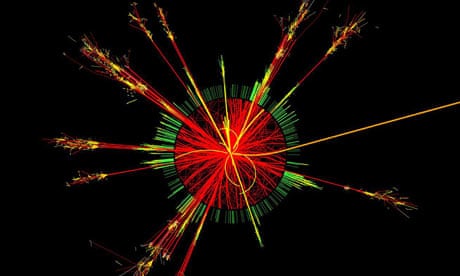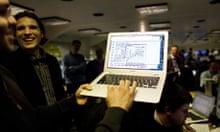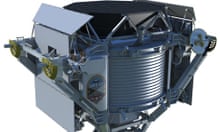Some time tomorrow, the Large Hadron Collider will attempt to crash protons together at an energy three and a half times higher than the previous record. The moment will mark the beginning of a long search for new particles, forces and dimensions at Cern, the European nuclear research organisation, near Geneva.
The LHC really became a collider just before Christmas. The collisions recorded back then were not at particularly high energy, but three experiments have now published results; my experiment, Atlas, being the latest, with the paper being accepted for publication only last week. Before storming onward, it is a good moment to see what these results actually tell us.
The detectors (Alice, CMS and Atlas) are really just huge digital cameras designed to record what happens when protons smash together. The first thing you do with a new collider and detector is measure the particles produced in an "average" collision.
Measuring average, typical events tells us various things. We know the proton is full of quarks, stuck together by the strong nuclear force. How it behaves at high energies is not very well known, and these measurements will help. They also help us understand backgrounds to rarer events, for example, those where a Higgs particle (which is thought to bestow mass on elementary particles) might be produced, and inform models of massive air-showers, which happen when cosmic rays hit the upper atmosphere. You can see in the Atlas paper that the models don't fit the data quite right. The model builders are already tuning up to improve this.
The papers from the three detector teams all have their strengths. The Alice paper was first, although they did not wait for all the data so it's less precise than the others. The CMS paper was next, and is the only one to include the highest energy collisions so far, at 2.36 TeV (trillion electron volts).
The Atlas paper was significantly slower to appear, and I really hope CMS don't beat us to the Higgs that way! The main strength of the Atlas paper is subtle but important. To understand it you have to go back and ask what is a collision?
So far as the LHC is concerned, a collision is when two protons interact. But most of the interactions are glancing blows. In most of these collisions the protons remain intact, or are broken into very few particles. We call these "diffractive" collisions.
How common diffractive collisions are matters if we want to be clear what an average event looks like. To find out, we measure a series of collisions, which are selected using what is called a "minimum bias". This is simply a way of ensuring we are not giving undue weight to a certain kind of event. It means our average collision really is typical of what goes on in the machine.
An equivalent would be working out the average height of a person in the UK by selecting a sample of people and measuring them. You wouldn't do it in a pub, because that would bias your sample: there would be too few children. (Plus you might get funny looks.)
The problem with collisions at the LHC is you can't be truly unbiased: the vast majority of glancing collisions don't leave a trace in the detector. Instead, the protons carry on down the LHC beam pipe. In practice you will see most of the "non-diffractive" collisions, where the protons are smashed up and the particle debris hits the detector, but only a handful of the diffractive ones.
In the past, experiments have used theoretical models to solve this problem. They either remove the small number of diffractive collisions that are recorded and produce measurements of what they call non-diffractive events. Or they estimate the missing diffractive events and add them in. This means that what you are measuring is only defined within a theory, where "diffractive" and "non-diffractive" are really just words. If you use a model to correct for them, you buy into a particular definition of them, and hence a particular view of nature.
The bottom line is that if you take this approach, you are no longer just reporting what happens. In my view, it's important that, having gone to the enormous trouble of building the LHC and the detectors, we should first just say what happens when particles collide inside them. Only then should we confront that data with theory, as part of the process of exploration and understanding. The first bare reporting step is essential.
This is what we did on Atlas. We measured the particles produced from all of the collisions we recorded that left at least one track in the detector, regardless of whether theoretical models would label them as glancing collisions or non-diffractive events. This isn't perfect, but it is the most objective way we have of measuring an average collision: there is a bias, but it does not depend on the theory.
The number of particles in an average collision can vary by up to 20% depending on how you define the average. That may seem a small difference, but the difference in the principle of how the measurement is made is huge. In my view, this approach should be carried forward into all future measurements at the LHC.
So, the first results are in. The detectors work well. The theoretical models are reasonable, but can be improved. We're not at the stage of reporting really exciting new physics yet, but it is interesting and important for firming up our knowledge as we step into the unknown. As we go there, we should all be sure to first report what we see, and only then have a go at interpreting it.
Jon Butterworth is a member of the High Energy Physics Group at University College London



Comments (…)
Sign in or create your Guardian account to join the discussion